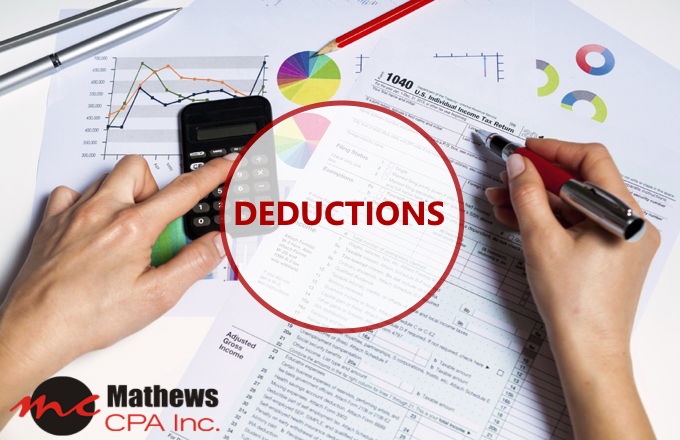Standard deductions, Itemized deductions and Above-the-line deductions
There are 3 different types of deductions. Above-the-line deductions, standard deductions, and itemized deductions. They all cut your taxable income in different ways. So how do they work, and what makes them different?
Standard Deductions
This is the most basic type of deduction. The standard deduction is a fixed, base-level amount based on your filing status – married filing jointly, single, head of household, etc. – and tax situation.
If your tax return is simple, and you don’t have a lot of special situations that would make it more beneficial to itemize deductions, you’ll probably get the standard deduction.
For the 2016 tax year, the standard deduction is $6,300 for single or married filing separate, $12,600 for married filers, and $9,300 for head of household filers. Those amounts go up if you’re over 65, blind, or both.
Itemized Deductions
While the standard deduction covers your basic, some tax situations make it beneficial to itemize deductions. Itemizing deductions means that you list out all your qualifying deductions specifically instead of taking the standard deduction for your filing status.
You don’t want to itemize unless the sum of your specific deductions is more than the standard deduction, but itemizing deductions unlocks more tax breaks. Here, for example, are some of the more common itemized deductions:
- Business travel expenses
- Mortgage expense
- Gifts to charity
- Casualty or theft loss
- Medical and dental expenses
- Other taxes
Above-the-line Deductions
Finally, above-the-line deductions are adaptable tax breaks, since you can claim them regardless of whether you chose standard or itemized deductions. As the simplest of the three deduction types, above-the-line deductions are just stand-alone adjustments. These deductions include items such as:
- Education expenses
- Moving expenses
- Student loan interest
- IRA contributions
We’ll simply ask you a few questions to figure out which deductions you should claim based on your filing status and financial situation.

